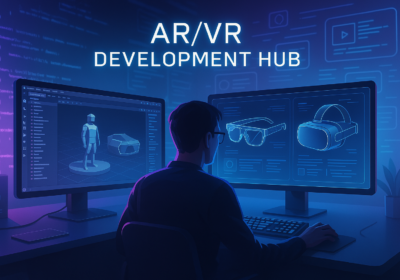Welcome to the Learn section of arvrstudio.com – your starting point to explore the exciting world of Augmented Reality (AR), Virtual Reality (VR), Mixed Reality (MR), and Extended Reality (XR). Whether you’re a student, a curious tech enthusiast, or a budding developer, this page will guide you through the essential concepts, use cases, and development paths.
Table Of Content
What is AR, VR, MR & XR?
Understand the Core Differences Between AR, VR, MR & XR
Get a clear overview of the immersive tech landscape:
-
Augmented Reality (AR): Adds digital overlays to your real-world view using phones, AR glasses, or headsets.
-
Virtual Reality (VR): Fully immerses users in a digital environment using headsets like Meta Quest or HTC Vive.
-
Mixed Reality (MR): Blends the real and virtual worlds, allowing real-time interaction between both.
-
Extended Reality (XR): The umbrella term for AR, VR, and MR — covering the full spectrum of immersive tech.
Real-World Use Cases of AR & VR
How AR/VR is Changing Industries
Explore practical applications across multiple sectors:
-
Healthcare: AR aids surgeons with live data; VR powers realistic medical simulations.
-
Education: AR brings textbooks to life; VR offers immersive learning environments.
-
Retail: Try-before-you-buy with AR; VR powers virtual showrooms.
-
Manufacturing: AR helps with assembly guidance; VR improves design and prototyping.
→ Explore: Top AR/VR Use Cases Across Industries
AR vs. VR: What’s the Difference?
Compare Technologies, Hardware, and Best Use Scenarios
Key distinctions at a glance:
-
User Experience: AR enhances your reality, while VR creates a new one.
-
Devices: AR runs on smartphones or glasses; VR requires dedicated headsets.
-
Applications: AR is ideal for real-world enhancement (like navigation or repairs); VR is perfect for immersive experiences (like simulations or games).
I believe that augmented reality will be the biggest technological revolution that happens in our lifetimes.
Tim Sweeney
Step-by-Step Beginner Guide to Becoming an AR/VR Developer
Ready to build your first immersive app? Follow these steps:
1. Learn the Basics: Understand 3D environments, user interaction, and spatial design.
2. Choose a Platform: Unity and Unreal Engine are industry-standard for immersive development.
3. Pick Your SDKs: Depending on your goals, use ARKit, ARCore, Vuforia, or Oculus SDK.
4. Start Small: Follow beginner tutorials and build simple prototypes.
5. Join Communities: Engage with AR/VR dev forums and Discord groups for feedback and learning.
→ Get Started: Beginner’s Guide to AR/VR Development
Success Stories & Case Studies
Real Companies Using AR/VR for Real Impact
Inspiring real-world examples:
-
Notre Dame Restoration: Ubisoft’s VR reconstruction helped in digitally preserving the cathedral.
-
Medical Training: Top institutions use VR to train surgeons in a safe, immersive environment.
-
Retail Innovation: IKEA’s AR app lets users preview furniture in their homes before buying.
Final Thoughts
This guide is just the beginning of your AR/VR journey. Each topic above links to detailed articles where you’ll find in-depth tutorials, industry insights, and expert tips. Bookmark this page or subscribe for updates — we’re here to help you learn, build, and innovate with immersive technology
Please share this article if you like it!








No Comment! Be the first one.